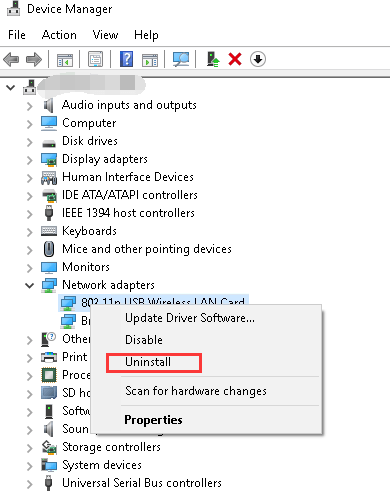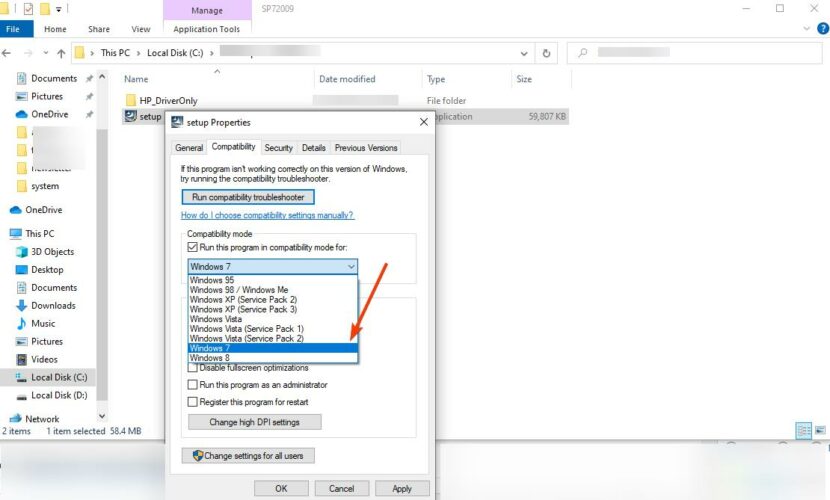IP stands for Internet Protocol. This protocol, like many others such as HTTP, TCP, UDP, etc., is responsible for establishing communications in most of our networks. Even a fridge can have an IP address! Also devices such as a router, a server, a telephone, a computer, a television, etc. Block Facebook's IP address in addition to its domain name to restrict access to the social networking giant on your home network. Like many popular websites, Facebook uses many internet servers to handle incoming requests to its service, so to block Facebook, block the complete list of IP addresses that the company owns. Designed for users throughout the innovation lifecycle, our suite of solutions and services deliver insights and answers. IP.com’s intellectual property software is for IP professionals, research and development teams, inventors and entrepreneurs, and more.
We live in an IP-centric world. The explosion of IP addresses is being driven by increases in connected devices, apps, and mobility. The outcome is unmanageable network complexity, which is being magnified by IPv6 coexistence and multi-cloud. Network managers are consequently asking themselves: “how can I control my IP network if I can’t control IP resource allocation, access & routing?” Their top priority for the management of their networks has now become clear: simplification, driven by automation. This is achieved by implementing modern IP address management best practices.
Modern IPAM Best Practices: Automation, Enhanced Control, and Efficiency
Two major factors contribute to the simplicity of modern network management: visibility and automation. Being a cornerstone of IP networks, a modern IPAM solution can help with both these factors, so it’s always advisable to integrate IPAM into any network and cloud automation project.
IP and DNS are the foundations of network infrastructures. They ensure hostname visibility and host connection while providing an IP routing structure for application access routing. If they are not functioning correctly, connectivity between all components of the network cannot be guaranteed, meaning some of your apps may be unreachable.
IPAM, being at the core of DDI (DNS-DHCP-IPAM), is the base for efficient management of networks. It controls deployment, design, and capacity planning. With an advanced IPAM solution, you’ll get a holistic view of IP resources across your entire hybrid infrastructure, giving you your first line of security and control over your network. And when you throw in automation, massive time savings follow. An automated DDI solution integrated to the orchestration process significantly reduces the number of manual tasks required to be performed by network administrators. The end result is accelerated roll-out of new services and apps, particularly in cloud environments. You can achieve all of this, while at the same time ensuring corporate policies are enforced, and configuration errors eliminated.
IPAM Use Cases
An example of how incorporating automated DDI into the orchestration process helps roll out services easier and faster would be a retailer creating new stores in it’s IT infrastructure – a task easily handled thanks to IPAM. This would be accomplished through the implementation of specific templates. Having a centralized management platform makes life easier for administrators and also helps maintain consistency of the distributed networks thanks to high-performance data synchronization capabilities, allowing the management of a multitude of remote DNS/DHCP appliances all around the world.
The IoT space offers another example of the important impact of IPAM in networking. Imagine an unregistered device being able to connect to the network, perhaps from an unknown location. This could severely affect performance, or worse still, imply an important security risk. Effective control of IP addresses prevents this happening from two angles: first, by having visibility of all devices which connect to the network, and second by enforcement of company policies over IP management.
IPAM Best Practices

In order to make your network as flexible, secure, reliable and responsive as possible, simple IP Address Management best practices should be followed. Here are five of the top IPAM best practices we recommend:

- Maintain centralized, unified and automated IP Address Management services for holistic visibility, overall consistency control, and lightning-fast services
- Determine an IP plan structure and naming strategy based on business needs for operational efficiency and scalability
- Define corporate standards and enforce assignment policies to streamline and simplify deployment processes
- Optimize IP space fragmentation for network scalability, agility and routing performance
- Start planning IPv6 transition now
Over time, IP addressing environments have become very complex to manage, while at the same time becoming absolutely mission-critical. IPAM – indeed DDI – is the key for networks to be able to ensure accessibility, security and performance. Organizations today are only as agile as their IP infrastructure foundation, so the top three key suggestions for efficient management of your network are obvious: simplify, simplify and simplify. If you’d like to learn more, download our IPAM best practices white paper or reach out to us about implementing an IPAM strategy for your enterprise or organization.
To discover the full list of ten recommendations with more complete details, download the white paper IP Address Management Best PracticesPosted in:- IPAM
- Network Automation

A Converged IP Network today refers to the Unified Computer Network (LAN, based on IP) that uses multiple media (Wired, Wireless) to carry a variety of traffic types – Data, Voice, Video etc on a single network without the need for separate networks for each of them.
Why Converged IP Networks?
The Computer Networks (based on IP) are all pervasive today. Every department, building, branch of an organization requires and maintains a full fledged Local Area Network (LAN) for inter-connecting computers. The IP Network can operate on a variety of media – Copper, Fiber and wireless. So, since they have become inevitable and dominant, the other services (voice and data) have been redesigned to run on this network.The Phones can today plug in to the computer networks using RJ-45 Jacks and the IP Surveillance Cameras can also directly plug in to the computer network similarly. Not only on the hardware, but newer developments on the software (protocol) front as well as their standardization and international acceptance ensured that real time applications like voice and video can run along side data on a computer network and still give best quality if the Unified Communications strategy is planned properly and executed effectively.
There was another critical component of these services over IP networks that helped their mass adoption – Enabling newer features and tighter integration between data, voice and video applications. Think of this, an IP Telephony server can not only support most of the features of the existing EPABX, but can also add new and interesting features out of the box – Like Database/CRM integration for IVR enhancement, Call Recording, Meet Me Conference, Unified Communications capabilities, presence information, single number reach, adding video to a voice call etc. Similarly, a Video Conferencing system was able to call any other Video Conferencing system across the world simply if both sides just had a data connection to the Internet (via Internet Leased Lines) – This eliminated the requirement of dedicated PRI/ISDN lines at each location and also did not have the per minute call charges as most of the Internet bandwidth plans are negotiated on a yearly basis. IP Surveillance Cameras, similarly offered newer features like face recognition, license plate recognition, remote surveillance over the Internet, motion sensing, voice recording, video compression etc that were not hitherto available with DVR based systems.
So, for an organization implementing a green field project (new campus) today, a single computer network would be sufficient for all their communication needs. That means lesser cost/ lower implementation time for the various passive components that are required to form independent networks. More importantly, the operational and maintenance costs (of having to maintain three independent networks) comes down heavily.
What are the challenges ?
Ip-com Network App
Well, before establishing a converged network, if the computer network has some problems, it will only affect the Internet usage and perhaps access to ERP/ application servers. You still had access to phones – so you could talk to anyone and you could monitor the video output of a DVR surveillance system. But once the network is converged, any major problem with the computer network would invariably affect all the services! And mind you, the computer network, if not planned and designed properly, can pose quite a few problems! For instance, a computer virus, network intrusion by hackers or Botnets would affect only your PC’s earlier, but now it can affect the phones as well! A well planed DoS (Denial Of Service) or a DDoS attack could choke the network devices badly and stop it from communicating any data – real time or otherwise! If the network capacity is not up to the mark, you could have delays while talking over the phone!
The investment needed to ensure that the computer network can handle the excessive load generated by the real time applications like voice and video could be quite high like the investment needed to secure all the network devices within the LAN. The cost of building redundant active components and passive paths to keep the network even 99% up could be very formidable!
In spite of the challenges, the converged network could very much become a reality if the implementation of the network and the services were planned properly and executed efficiently. This should be in tune with the business processes – meaning the network ought to help reduce ongoing recurring costs and also help create new revenue opportunities for the organizations employing them. That, is the real strength of Converged Networks! And what better platform to make it all happen than the IP?
Click here to look at a basic enterprise LAN network architecture diagram and to read a small introduction about each of the components involved in creating a Computer Network.

Components of a Converged IP Network:
There are four main components of a Converged IP Network: The Computer Network itself with all the active and passive components required to build the Wired IP Network, Wireless Networks, Voice Over IP (IP Telephony) and Video Over IP Systems (Video Surveillance and Video Conferencing).

As the old adage goes that a diagram is equivalent to 1000 words, we have given the architecture diagram for each of the components of a converged network below. And if you want to read those 1000 words, just click on the text links given below each diagram for a brief overview on each of them.
Basic Network Connectivity Diagram – Active and Passive Network Components:
Ip-com Network & Wireless Cards Driver Download Free
Wireless (Wi-Fi) Network – Architecture Diagram:
Wireless Network Architecture Diagram
Voice Over IP (IP Telephony) – Architecture Diagram
Video Over IP (Video Conferencing and Video Surveillance) – Architecture Diagram:
Video Over IP - VIdeo Conferencing and Video Surveillance - Block Diagram
excITingIP.com
In case you may have any questions or want to add some information, you could use submit the same in the comments section below. You could also use the Contact Form to contact us. If you want to follow topics such as these regularly from this website, you could submit your email address in the box mentioned “Get e-mail updates when new articles are published”
